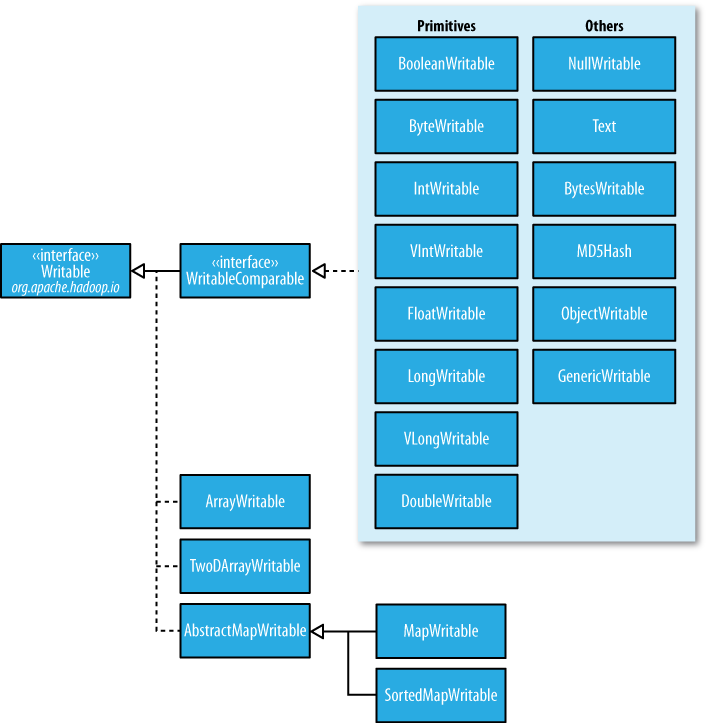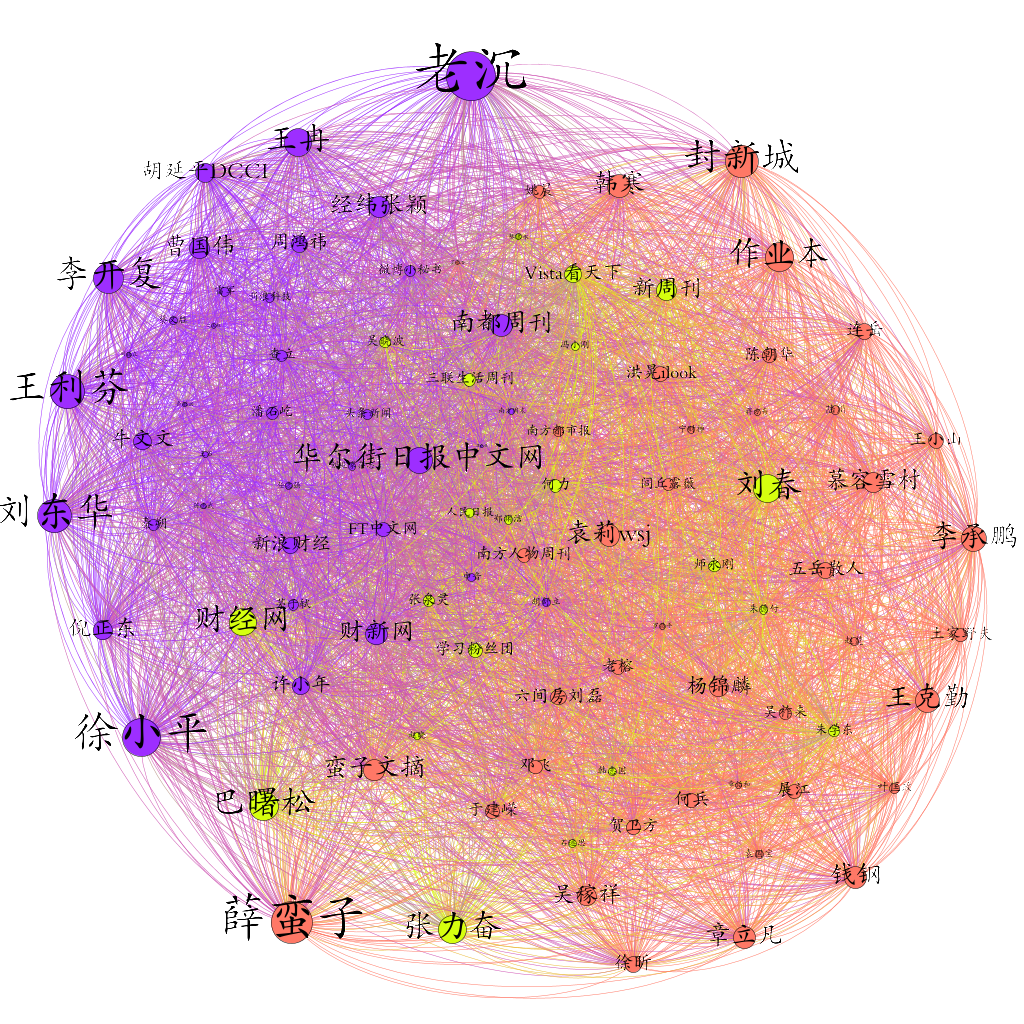在Hadoop上运行Mahout KMeans聚类分析
上一篇文章“Mahout与聚类分析”介绍了如何使用Mahout进行聚类分析的步骤,并且结合实例使用K-Means对微博名人共同关注数据进行了共被关注聚类分析。Mahout运行有本地运行和Hadoop运行两种模式,本地运行是指在用户本地的单机模式下运行,就像运行其他普通的程序一样,但是这样这样就不能最大限度的发挥出Mahout的优势,在本文中我们介绍如何让我们的Mahout聚类分析程序在Hahoop集群上运行(在实际操作中笔者使用的伪分布Hadoop,而不是真正的Hadoop集群)。
配置Mahout运行环境
Mahout运行配置可以在$MAHOUT_HOME/bin/mahout里面进行设置,实际上$MAHOUT_HOME/bin/mahout就是Mahout在命令行的启动脚本,这一点与Hadoop相似,但也又不同,Hadoop在$HADOOP_HOME\conf下面还提供了专门的hadoop-env.sh文件进行相关环境变量的配置,而Mahout在conf目录下没有提供这样的文件。
MAHOUT_LOCAL与HADOOP_CONF_DIR
以上的连个参数是控制Mahout是在本地运行还是在Hadoop上运行的关键。
$MAHOUT_HOME/bin/mahout文件指出,只要设置MAHOUT_LOCAL的值为一个非空(not empty string)值,则不管用户有没有设置HADOOP_CONF_DIR和HADOOP_HOME这两个参数,Mahout都以本地模式运行;换句话说,如果要想Mahout运行在Hadoop上,则MAHOUT_LOCAL必须为空。
HADOOP_CONF_DIR参数指定Mahout运行Hadoop模式时使用的Hadoop配置信息,这个文件目录一般指向的是$HADOOP_HOME目录下的conf目录。
除此之外,我们还应该设置JAVA_HOME或者MAHOUT_JAVA_HOME变量,以及必须将Hadoop的执行文件加入到PATH中。
综上所述:
1. 添加JAVA_HOME变量,可以在直接设置在$MAHOUT_HOME/bin/mahout中,也可以在user/bash profile里面设置(如./bashrc)
2. 设置MAHOUT_HOME并添加Hadoop的执行文件到PATH中
两个步骤在~/.bashrc的设置如下:
export JAVA_HOME=/usr/lib/jvm/java-7-openjdk-i386
#export HADOOP_HOME=/home/yoyzhou/workspace/hadoop-1.1.2
export MAHOUT_HOME=/home/yoyzhou/workspace/mahout-0.7
export PATH=$PATH:/home/yoyzhou/workspace/hadoop-1.1.2/bin:$MAHOUT_HOME/bin
编辑完~/.bashrc,重启Terminal即可生效。
3. 编辑$MAHOUT_HOME/bin/mahout,将HADOOP_CONF_DIR设置为$HADOOP_HOME\conf
HADOOP_CONF_DIR=/home/yoyzhou/workspace/hadoop-1.1.2/conf
读者可以将相关的Hadoop和Mahout主目录修改自己系统上面的目录地址,设置好之后重启Terminal,在命令行输入mahout,如果你看到如下的信息,就说明Mahout的Hadoop运行模式已经配置好了。
MAHOUT_LOCAL is not set; adding HADOOP_CONF_DIR to classpath.
Running on hadoop...
要想使用本地模式运行,只需在$MAHOUT_HOME/bin/mahout添加一条设置MAHOUT_LOCAL为非空的语句即可。
Mahout命令行
Mahout为相关的数据挖掘算法提供了相应的命令行入口,同时提供了一些数据分析处理的用到的工具集。这些命令可以通过在终端输入mahout获得。以下显示了输入mahout的部分信息:
....
Valid program names are:
arff.vector: : Generate Vectors from an ARFF file or directory
baumwelch: : Baum-Welch algorithm for unsupervised HMM training
canopy: : Canopy clustering
cat: : Print a file or resource as the logistic regression models would see it
cleansvd: : Cleanup and verification of SVD output
clusterdump: : Dump cluster output to text
....
fkmeans: : Fuzzy K-means clustering
fpg: : Frequent Pattern Growth
hmmpredict: : Generate random sequence of observations by given HMM
itemsimilarity: : Compute the item-item-similarities for item-based collaborative filtering
kmeans: : K-means clustering
....
Mahout kmeans
在上一篇文章,我们通过调用KMeansDriver.run()方法从Mahout程序中直接启动KMeans算法,这种方式对于在本地调试程序非常有用,但是在真实项目中,无论是使用Hadoop模式运行,还是本地运行,从命令行运行Mahout的相关算法更加合适,这样的好处是我们只需要给Mahout提供符合相应算法要求的输入数据,即可以利用Mahout分布式处理的优势。比如在本例中,使用kmeans算法,只需要事先将数据处理成Mahout kmeans算法要求的输入数据,然后在命令行调用mahout kmeans [options]即可。
在命令行输入不带任何参数的mahout kmeans,Mahout将为你列出在命令行使用kmeans算法的使用方法。
Usage:
[--input <input> --output <output> --distanceMeasure <distanceMeasure>
--clusters <clusters> --numClusters <k> --convergenceDelta <convergenceDelta>
--maxIter <maxIter> --overwrite --clustering --method <method>
--outlierThreshold <outlierThreshold> --help --tempDir <tempDir> --startPhase
<startPhase> --endPhase <endPhase>]
--clusters (-c) clusters The input centroids, as Vectors. Must be a
SequenceFile of Writable, Cluster/Canopy. If k is
also specified, then a random set of vectors will
be selected and written out to this path first
相关的参数我们已经在上篇文章中提到过。
具体的步骤如下:
1. 将数据处理为Mahout向量(Vector)的形式
2. 将Mahout向量转化为Hadoop SequenceFile
3. 创建K个初始质心\[可选\]
4. 将Mahout向量的SequenceFile复制到HDFS上
5. 运行`mahout kmeans [options]`
下面的命令显示使用CosineDistanceMeasure对data/vectors目录下Mahout向量数据进行kmeans聚类分析,输出结果保存在output目录下。
mahout kmeans -i data/vectors -o output -c data/clusters \
-dm org.apache.mahout.common.distance.CosineDistanceMeasure \
-x 10 -ow -cd 0.001 -cl
更加详细的命令行参数可以在Mahout wiki k-means-commandline上查找到。
总结
本文首先介绍了如何配置Mahout的Hadoop的运行环境,然后介绍如何使用mahout kmeans命令行将聚类分析运行在Hadoop上。

